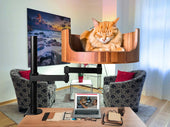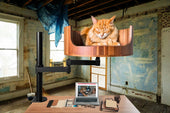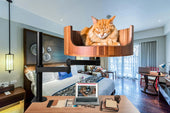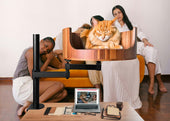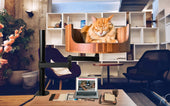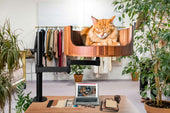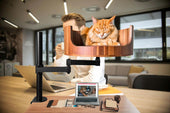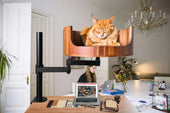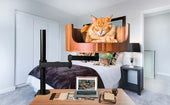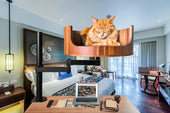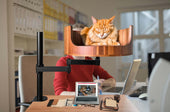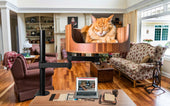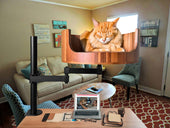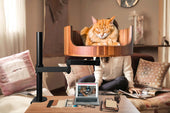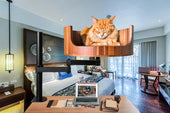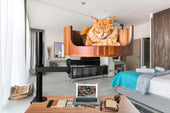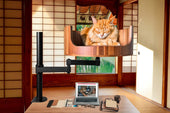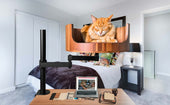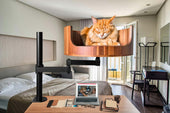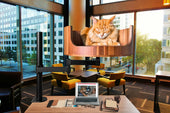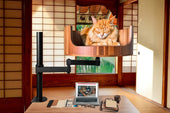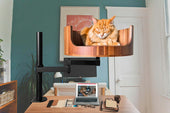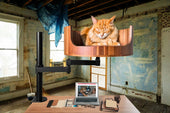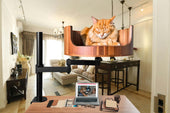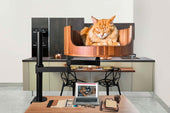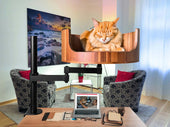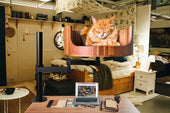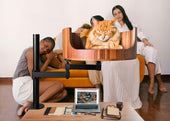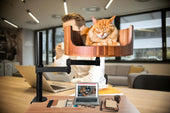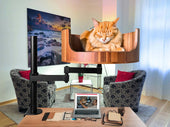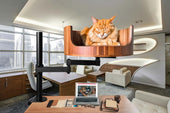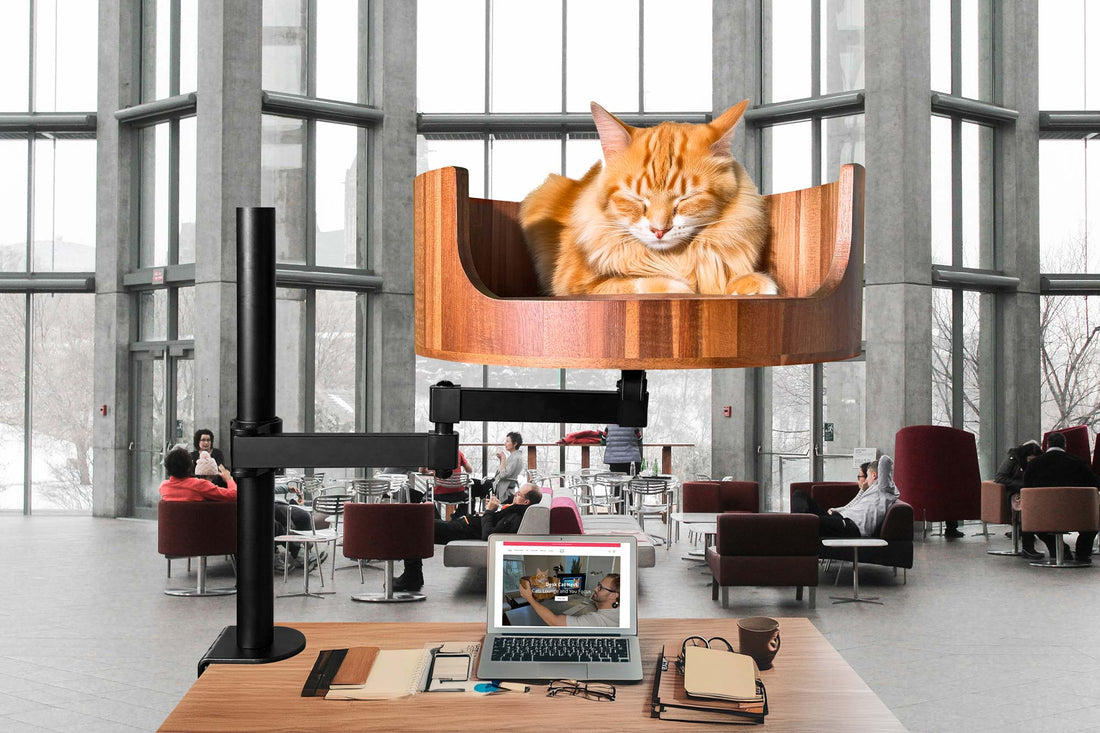
Cat Vomiting Yellow Liquid and Not Eating: What to Do?
Share
Is your cat vomiting yellow liquid and refusing to eat? This can be a cause for concern for cat owners, as it may indicate an underlying health issue that needs to be addressed promptly. In this article, we will discuss what to do if your cat is experiencing these symptoms, with a focus on potential causes, treatment options, and when to seek veterinary care.
Cats vomiting yellow liquid and not eating can be a sign of various health issues, such as gastrointestinal problems, liver disease, pancreatitis, or even a foreign object obstruction. It is important to monitor your cat's symptoms closely and seek veterinary advice if the vomiting persists or if your cat shows other signs of illness, such as lethargy or dehydration. In addition to discussing potential causes, we will also provide tips on how to care for your cat at home, including advice on feeding, hydration, and when to seek professional help. Remember, early detection and treatment are key to ensuring your cat's well-being, so don't hesitate to reach out to your veterinarian if you have any concerns about your cat's health.
Key takeaways:
1. Yellow vomit in cats can indicate liver or gall bladder issues.
2. Cats vomiting yellow liquid and not eating require immediate veterinary attention.
3. Possible causes for these symptoms include pancreatitis, intestinal blockages, or liver disease.
4. Treatment may include diagnostic tests, fluid therapy, and medications.
5. Preventive care such as regular check-ups, a balanced diet, and avoiding toxic substances can help keep cats healthy and prevent such issues.
## Understanding Cat Vomiting Yellow Liquid
When a cat vomits yellow liquid, it can be a sign of numerous underlying health issues. This yellow liquid is often bile, a digestive fluid produced in the liver and stored in the gallbladder. When a cat vomits bile, it could indicate that their stomach is empty, or they are experiencing gastrointestinal irritation or inflammation. Additionally, it could be a sign of liver disease, pancreatitis, or intestinal blockages. It is essential to consult a veterinarian to determine the exact cause of the vomiting.
## Reasons Your Cat Might Not Be Eating
There are several reasons why a cat may refuse to eat when they are vomiting yellow liquid. One common reason is nausea caused by an underlying health issue. Cats may also not eat due to stress, dental problems, or simply not liking their food. It is crucial to monitor your cat's eating habits and consult a veterinarian if they are not eating for an extended period. In some cases, lack of appetite could be a sign of a more serious medical condition that requires immediate attention.
## What to Do If Your Cat is Vomiting Yellow Liquid and Not Eating
If your cat is vomiting yellow liquid and not eating, it is essential to seek veterinary care promptly. The veterinarian will conduct a physical examination, recommend diagnostic tests, and determine the underlying cause of your cat's symptoms. Treatment may include medications to alleviate nausea, dietary changes, or more extensive interventions, depending on the diagnosis. Additionally, it is crucial to provide supportive care for your cat at home, such as keeping them hydrated and comfortable, to aid in their recovery.
## Preventative Measures to Avoid Cat Vomiting Yellow Liquid and Lack of Appetite
To prevent your cat from vomiting yellow liquid and refusing to eat, there are several preventative measures you can take. Ensure that your cat has a balanced and nutritious diet, with regular access to fresh water. Monitor their eating habits and seek veterinary care at the first sign of vomiting or lack of appetite. Additionally, reduce stressors in your cat's environment, ensure regular veterinary check-ups, and maintain a clean and safe living space for your feline companion. By taking these preventative measures, you can help ensure your cat's continued health and well-being.
Frequently Asked Questions
What could be causing my cat to vomit yellow liquid and not eat?
There could be several reasons for these symptoms, including possible nausea, digestive issues, hairballs, kidney disease, or a potential blockage in the gastrointestinal tract. It is important to consult with a veterinarian to properly diagnose the underlying cause.
How can the Desk Cat Nest help with my cat's vomiting and lack of appetite?
The Desk Cat Nest provides a comfortable and cozy space for your cat to relax and feel safe. By offering a stress-free environment, your cat may be more likely to eat and help alleviate symptoms of nausea that could be contributing to the vomiting.
Is the Desk Cat Nest easy to clean in case of accidents?
Yes, the Desk Cat Nest is designed with removable and washable cushions for easy cleaning. Simply remove the cushions and wash according to the manufacturer's instructions to keep your cat's space clean and hygienic.
Can the Desk Cat Nest be used for cats of all sizes?
The Desk Cat Nest is designed to accommodate cats of various sizes, with dimensions that provide ample space for most feline companions. However, it is always best to check the measurements and weight capacity to ensure a comfortable fit for your cat.
How quickly can I expect to see improvements in my cat's vomiting and appetite?
Results may vary depending on the underlying cause of your cat's symptoms. It is important to follow your veterinarian's recommendations for treatment and monitoring your cat's progress. The Desk Cat Nest may help create a calming environment, but it is not a substitute for professional medical care.
In conclusion, the Desk Cat Bed is a valuable choice for cats experiencing symptoms such as vomiting yellow liquid and not eating. The elevated design of the bed encourages proper digestion and reduces the likelihood of regurgitation after meals. Additionally, the cozy and comfortable design of the bed can help alleviate stress and anxiety in cats, further improving their appetite and overall well-being. Investing in a Desk Cat Bed can provide relief and comfort for your feline friend, leading to a happier and healthier pet.



